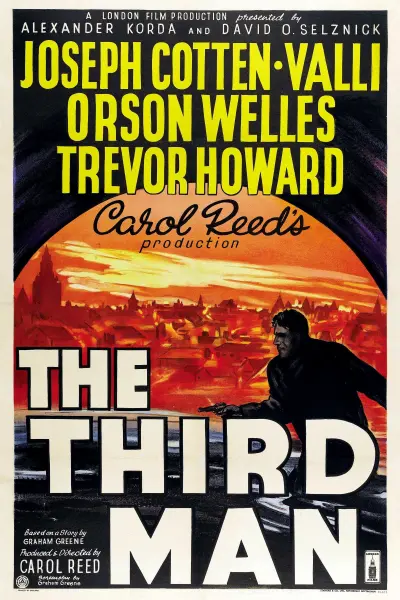
Picture this: a shadowy post-war Vienna, a city divided among the victors, its ruins holding secrets of espionage and deception. This is the backdrop for the 1949 British film noir classic The Third Man, directed by Carol Reed and written by novelist Graham Greene. At the heart of the intricate plot is Holly Martins, an American pulp novelist who steps into this murky world, searching for the truth about his friend Harry Lime, who is rumored to have died in a peculiar traffic accident.
As Martins delves deeper into the web of lies and half-truths, he discovers a city thriving on the black market, where nothing and no one is what they appear to be. Harry Lime, far from being a victim, becomes a symbol of the moral bankruptcy that plagues the post-war era. He profits from human suffering by trafficking diluted penicillin. Martins' journey transforms from a simple quest for answers into a moral odyssey, as he grapples with his loyalty to a friend against the harsh reality of Lime's heinous actions.
The film explores themes that resonate with the disarray and disillusionment of the time: the devastation caused by war, the chaos that follows peace, and the moral ambiguity that permeates every aspect of life. Amidst the iconic Dutch-angle cinematography and the haunting zither score by Anton Karas, lies a profound exploration of loyalty, betrayal, and the subjectivity of justice. The city's occupation by foreign forces mirrors the ethical and allegiant divisions among its inhabitants, making Vienna not only a setting but a character in its own right.
Reed's vision creates a suspenseful atmosphere and infuses the film with rich metaphors. One of the most memorable scenes is the ferris wheel confrontation, which serves as a literal and figurative climax. Here, Martins and Lime face off, exposing each other's ideals. It is in this moment that Lime's cavalier disregard for human life is laid bare, as he callously looks down upon the city's inhabitants as mere dots below.
However, The Third Man is not solely concerned with its plot but also with the complex characters that navigate through it. Anna, Lime's loyal lover, brings a heartbreaking layer of unresolved trauma as she struggles with her love, denial of reality, and ultimately, her confrontation with Lime's true nature. The film's portrayal of characters eschews simple stereotypes of villains and heroes, opting instead for figures that feel achingly human in their flaws and complexity.
In the end, The Third Man compels viewers to consider the price of disillusionment in a world where the line between right and wrong is blurred by the enduring shadows of war. It scrutinizes the human condition under extreme circumstances and delivers a story as timeless as its stark, monochromatic images. If you're looking to delve into classic cinema that is shrouded in ambiguity and filled with existential musings, all set to an unforgettable score, a night spent in the shadowy alleys of Carol Reed's Vienna is an experience not to be missed.

